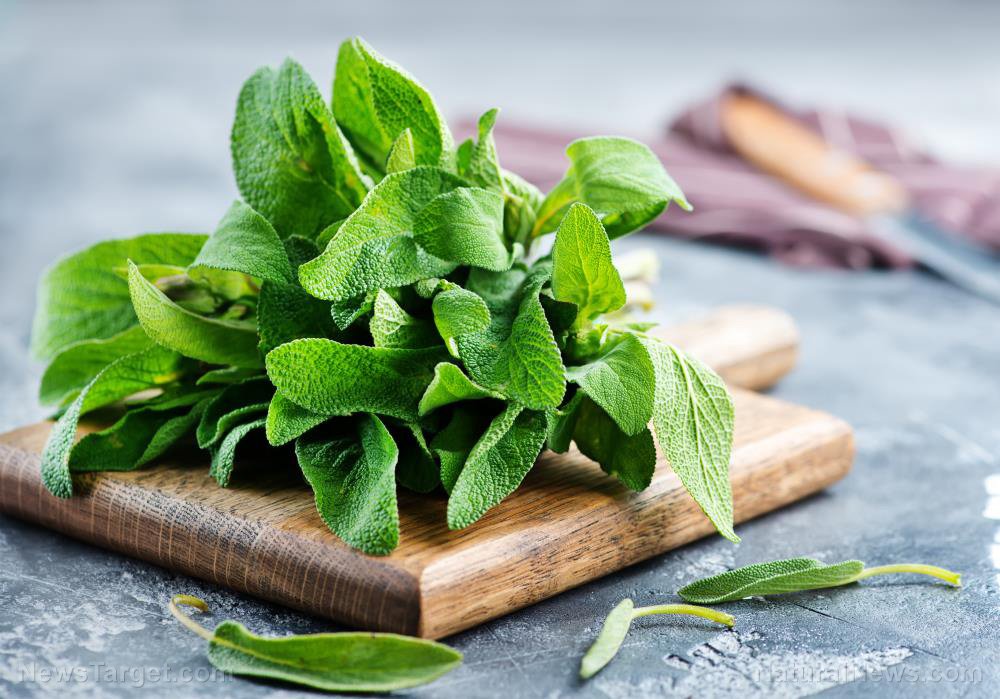
Sage (Salvia officinalis) is a perennial herb from the mint family. This pretty herb grows thick, grayish-green leaves and colorful flowers that attract pollinators like bees. It is commonly used to add flavor to dishes, sauces and dressings due to its strong aroma. Medicinally, sage has been used to treat an upset stomach, shortness of breath, loss of memory and anxiety, among other things.
Bringing sage to your garden
Growing sage is quite easy because this herb is extremely resilient. Here's how to plant, grow and harvest sage: (h/t to HomesteadingHippy.com)
How to plant sage
Sage thrives in zones 4 to 11, where the climate ranges from cool to humid. It grows best in sandy, well-draining soil with pH values between 6 and 7. To prepare your garden bed, mix plenty of aged compost, aged manure or other organic and high-quality soil amendments. If you need to increase your soil's pH levels, add some lime or wood ash to your soil. If you need to lower the pH, add compost, peat or sulfur. Once you strike the perfect pH balance, your sage plants should thrive will little care.
Sage grows best from cuttings or divisions. Seeds are not viable options for growing sage because they lose their fertility quickly and therefore have a difficult time germinating. If you do get to grow sage from seed, it will take around two years to reach its full, mature size. Plant using cuttings or divisions instead. You can ask local gardeners or buy from the nearby store. Plants from these local gardeners are already acclimated to the microclimate in your area, so it will be easier to grow them in your own garden. Be sure to plant sage somewhere sunny. This herb likes the full sun for six to eight hours.

How to propagate sage from cuttings
You can propagate sage in water or soil. Here's how:
- Water propagation — Snip a cutting about three to four inches from the top of the stem. Remove the bottom leaves from your cutting, but keep a few leaves at the top. Place your cutting in a glass of water and set it on a sunny windowsill. Change the water daily to prevent the growth of bacteria. It should begin to grow roots within two weeks, then you can plant your sage cutting into a small pot. Once it has formed a rootball, transplant it into a larger pot or out into your garden. Sage grows well indoors and outdoors.
- Soil propagation — Take the same type of cutting and apply rooting hormone. Plant the cutting directly into vermiculite or some sterile sand. The cutting should be ready to transplant in around six weeks.
How to grow sage
Young sage plants need consistent moisture so they do not wilt. Once they've matured, they can withstand heat and will need less moisture. Reduce watering to once a week or less. Better to underwater sage plants than overwater.
Be sure to prune your sage plant as it will happily spread in your garden or flowerbed. The best time to prune sage is during the winter. The plant is dormant and pruning during this period will prepare it for fresh, new growth in the spring. Prune the larger, woody stems to make room for new growth, then snip some of the inner stems for better airflow through your plant. This helps prevent fungal growth and powdery mildew. (Related: Home gardening basics: How to use herbs in your edible landscape.)
How to harvest sage
Simply pinch off a leaf for cooking. Sage has a strong flavor so a single leaf will be fine for one dish. In the first year, avoid harvesting too many leaves or stems so your sage plant can grow and mature fully. Once the plant is mature, you can harvest more leaves at a time, but leave a few stalks behind so your plant can continue to grow.
Sage is a perfect addition to your home garden. With its aroma, it will perk up your dish and bring more pollinators to your place. It's also a terrific remedy for a variety of ailments, like an upset stomach and shortness of breath. Grow sage and other herbs now to enjoy these perks.
Sources include:
Please contact us for more information.






















